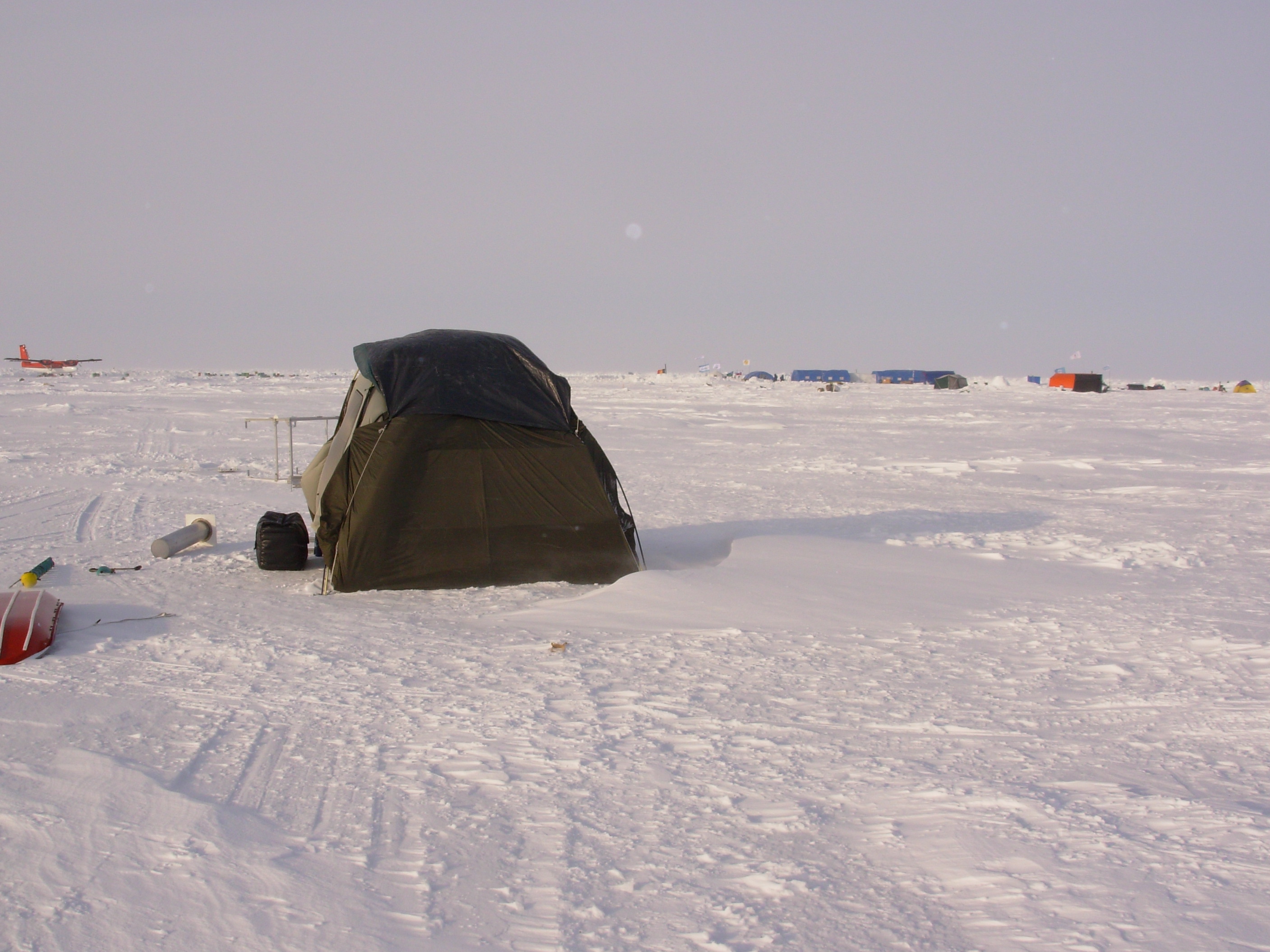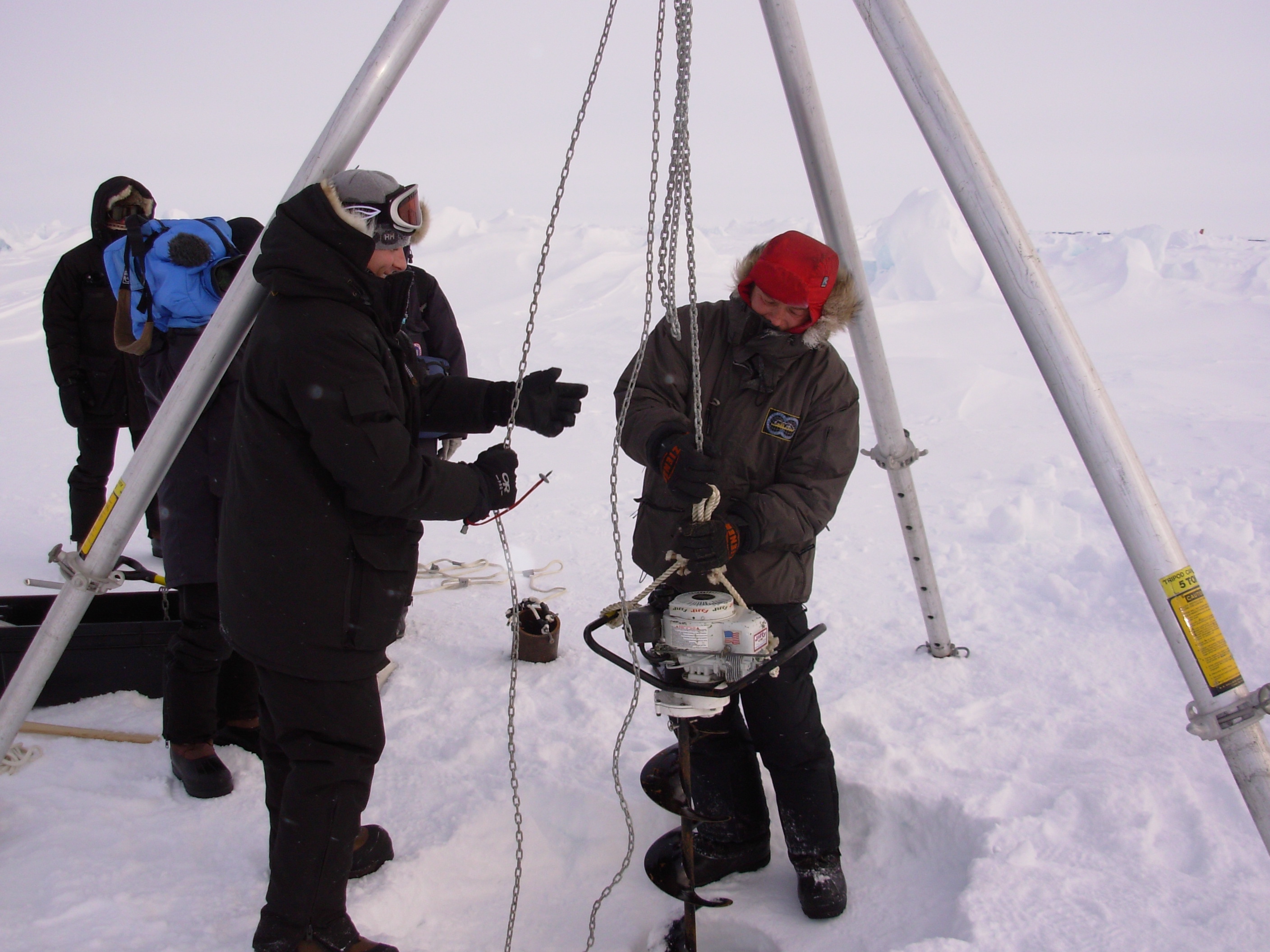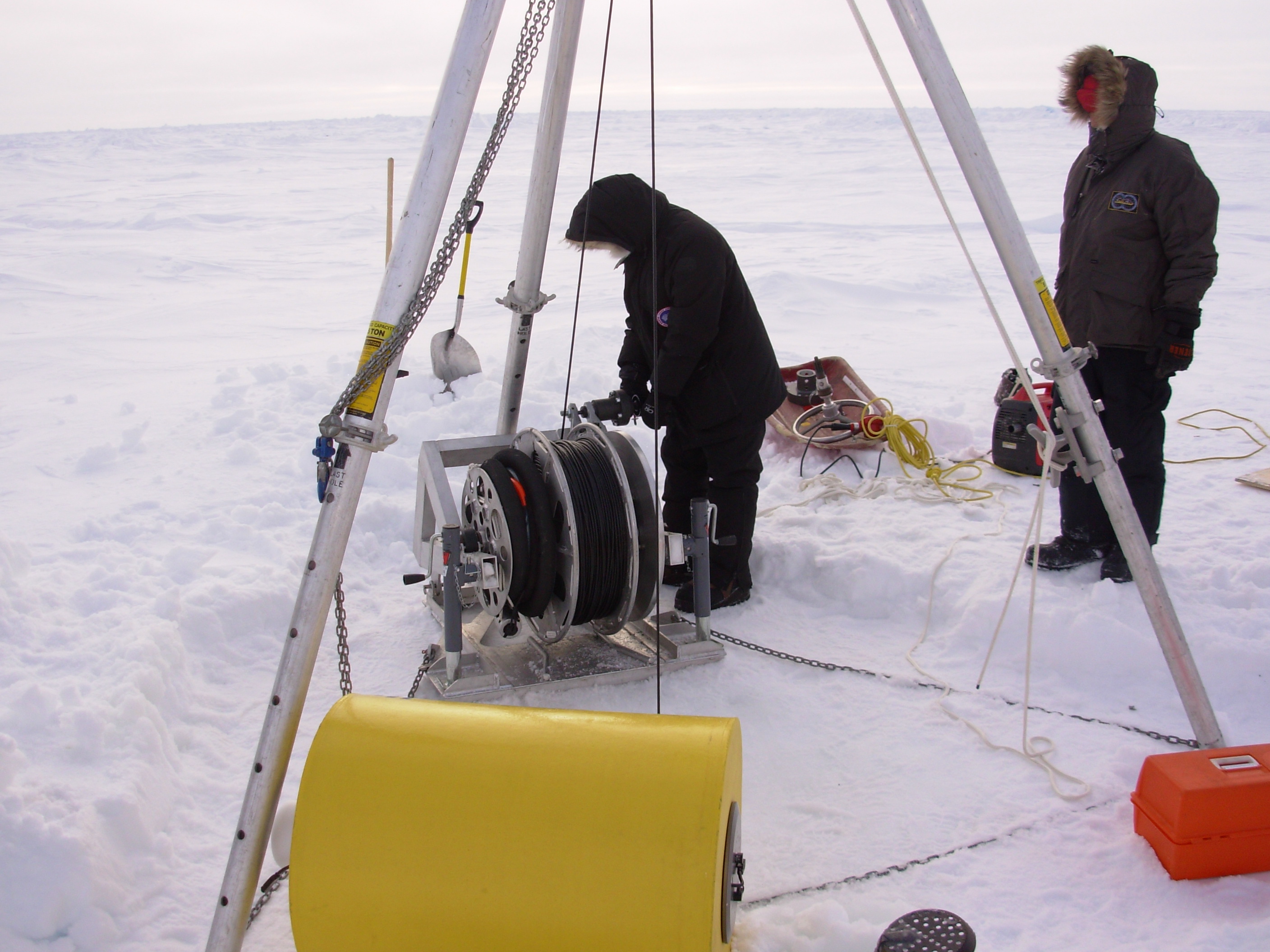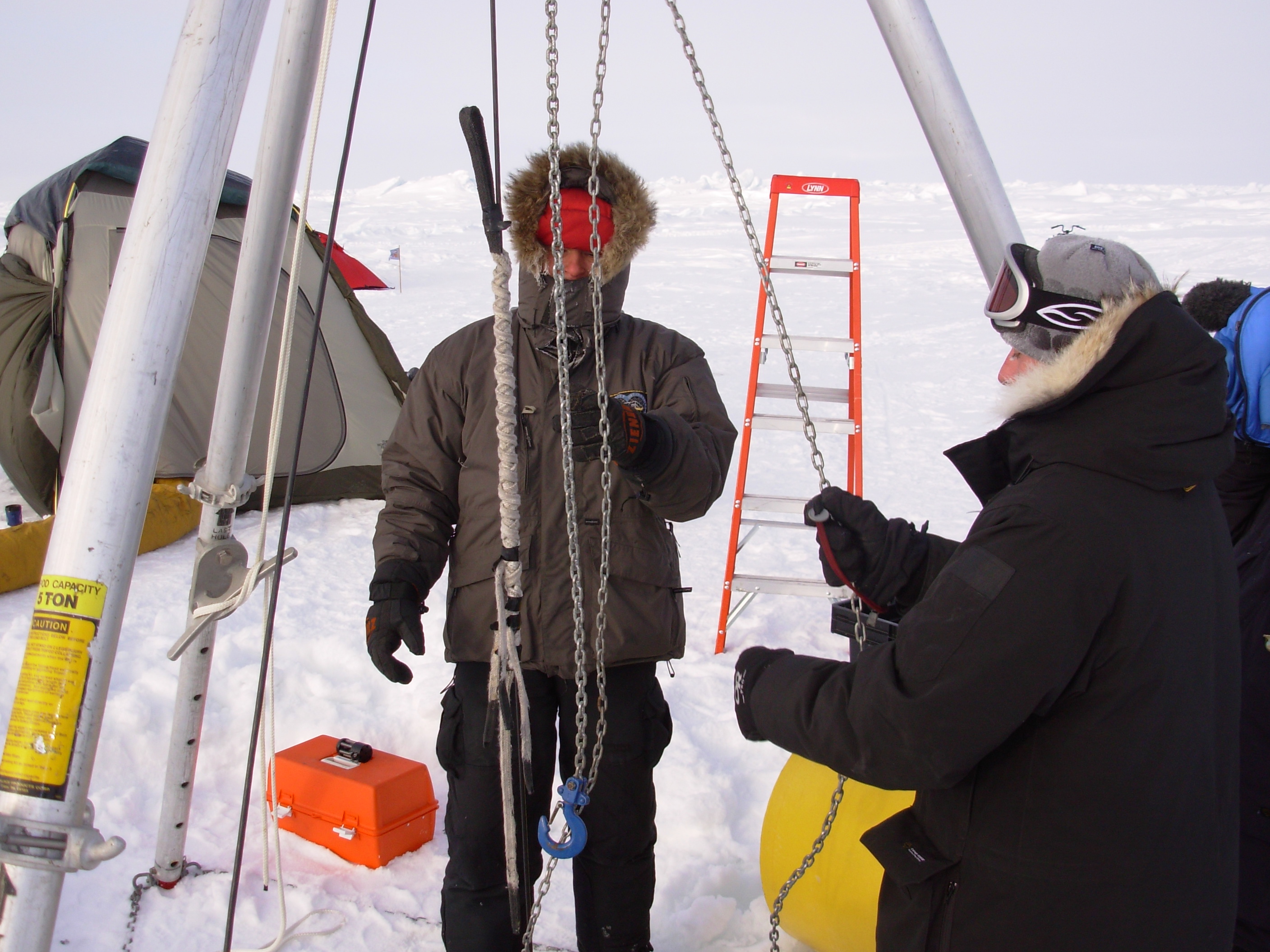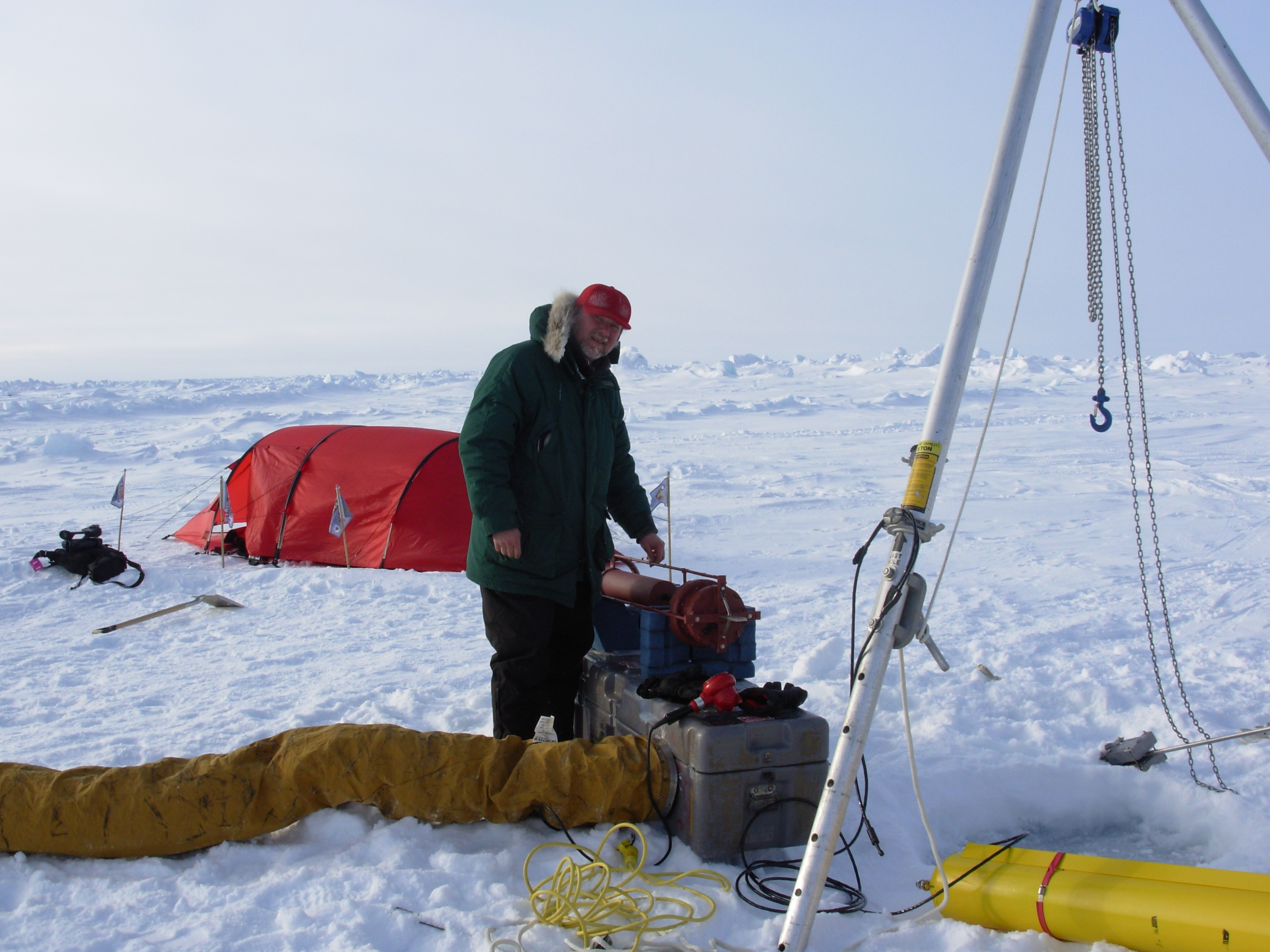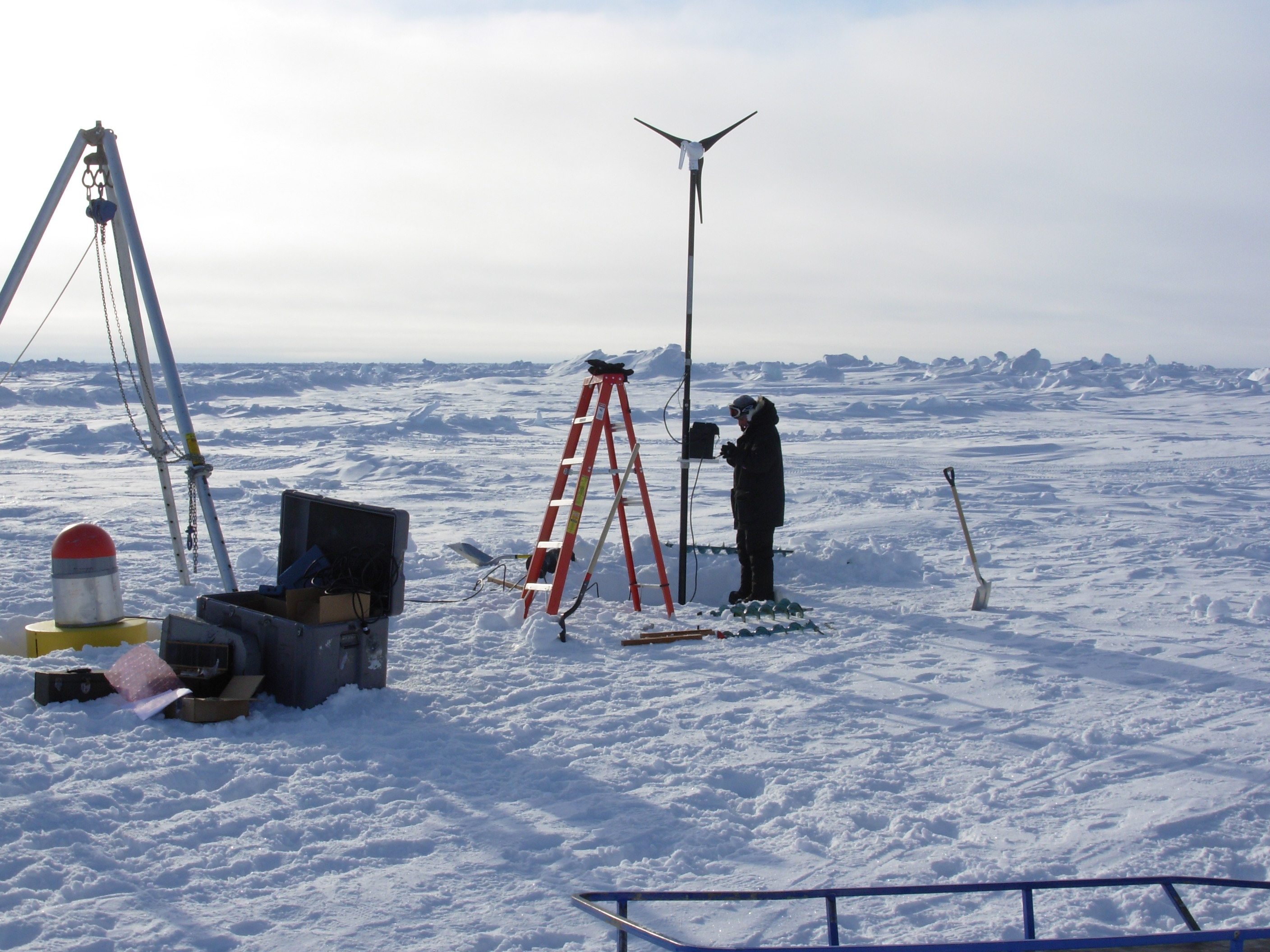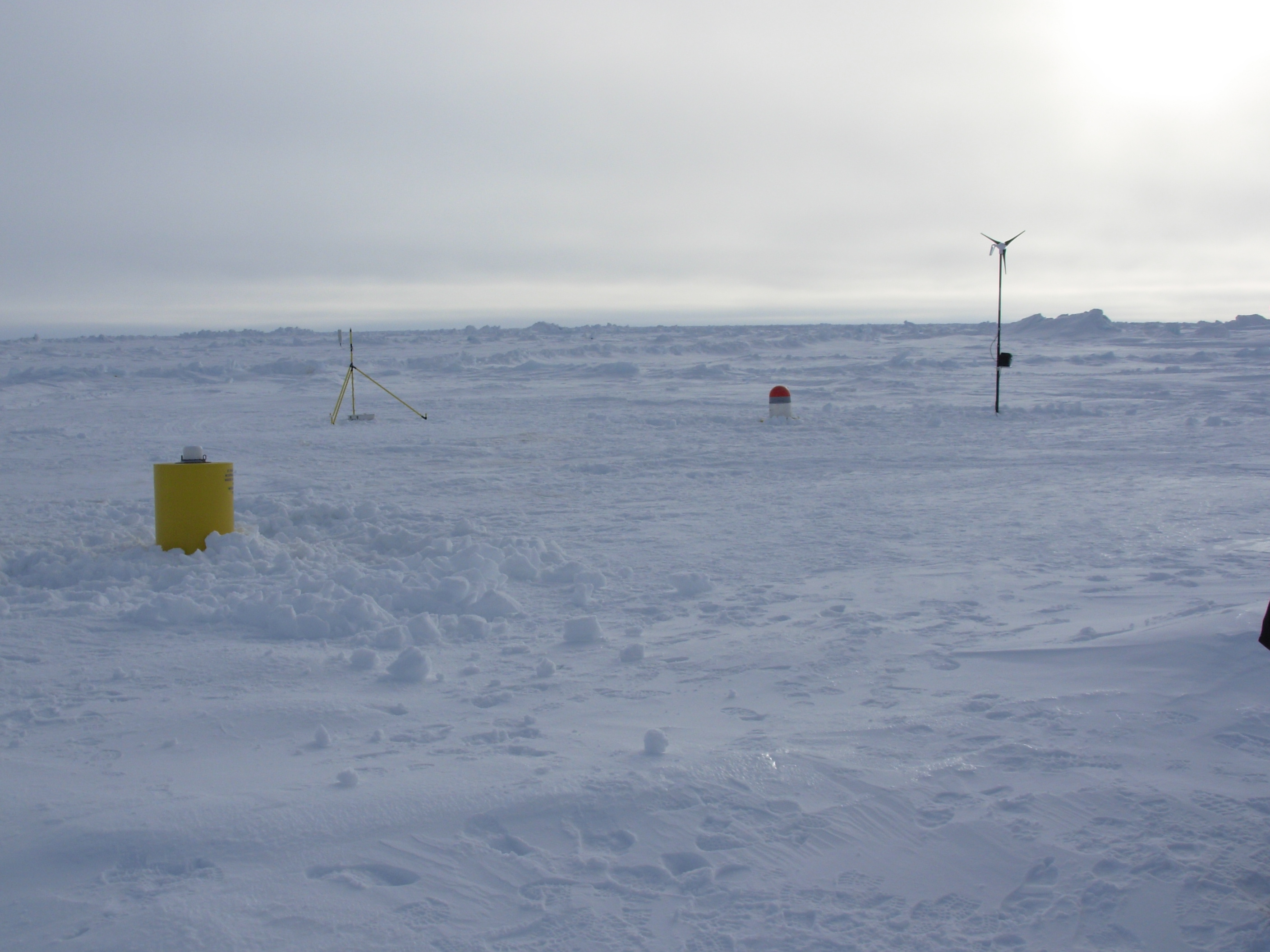ITP 7 Deployment Operations
The first ITP deployed in the Eurasian side of the Arctic Ocean was installed as part of a buoy cluster (or Ice Based Observatory) as a component of the 2007 NPEO. As in previous years, NPEO operated from the Russian ice camp Barneo, which is installed every March-April primarily for commercial tourist purposes. Transport for the NPEO scientists and gear to the North Pole ice camp was through Resolute and Alert, Canada using first a Hawker aircraft, and later a Twin Otter. While the Hawker was supposed to carry all of the NPEO project equipment to Barneo, a crack that formed in the runway after a series of storms at Barneo limited the length of the runway so that only the Twin Otter (with reduced payload) could be used. Consequently some of the NPEO field program had to be abandoned for the year, but installation of the buoy cluster continued using two Twin Otter flights.
The first half of our deployment team and half of our buoy gear (IMB and Weatherex) were transported from Alert to Barneo (about 60 miles from the North Pole) on April 22. A location on an 1.5 icefloe several hundred meters from Barneo camp was selected to deploy the various buoys making up the IBO. A NOAA/PMEL Weatherex buoy and US Army CRREL Ice Mass Balance (IMB) buoy were installed on the 23rd and 24th of April. The morning after the IMB was installed, a crack formed directly through the IMB buoy hull (and the ice camp runway as well). Fortunately, the crack in the runway healed itself, and the IMB canister was redeployed by removing it from the crack and inserting into an adjacent new hole, without removing any sensor wires.
After several days of weather delays, on April 27 the remainder of the deployment team and the ITP and AOFB buoys arrived. Due to the cracks that formed on the IMB and Weatherex buoy site, an alternate site was chosen for the rest of the buoys. Nothing near the camp was better than the existing site, so a 2.5 m ice floe over 1 km away was selected requiring snowmobiles for transport to the site. The ITP deployment the next morning concluded successfully in just less than 4 hours, with a few minor difficulties due to the cold air temperatures (-15 C). In particular, trouble keeping a laptop computer drive warm made communicating with the surface electronics difficult during testing before deployment. Meanwhile, a meteorological package installed by the Climate Change College was installed nearby. In the afternoon the AOFB sensor package was installed about 10 m away with a wind generator to provide additional power for fast sampling during windy periods.
Coverage leading up to the deployment is also available at: http://polardiscovery.whoi.edu/expedition1/journal-day10.html, and field reports from NPEO at http://psc.apl.washington.edu/northpole/NP2007Reports.html.
